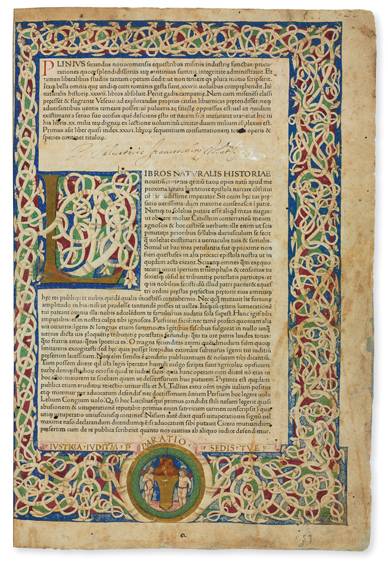The oldest book held by the Library was printed in 1469. It is the Naturalis Historiæ written in AD 77-79 by the Roman historian Pliny the Elder (AD 23-79). This 'Natural History' consists of 37 sections and is an encyclopedia of learning and art connected with nature. Pliny studied original authorities and used excerpts to compile a range of sections in the encyclopedia covering mathematical and physical description of the world, geography, ethnography, anthropology and human physiology, zoology, botany, pharmacology, mining and mineralogy.
The library copy was printed in Venice by Johan and Wendelin of Speyer and was one of the first classical manuscripts to be printed. The volume consists of 355 leaves, with a full page having 50 lines. The text contains some illuminated and coloured lettering.
It is an example of an incunabula, an early book printed before 1501.



